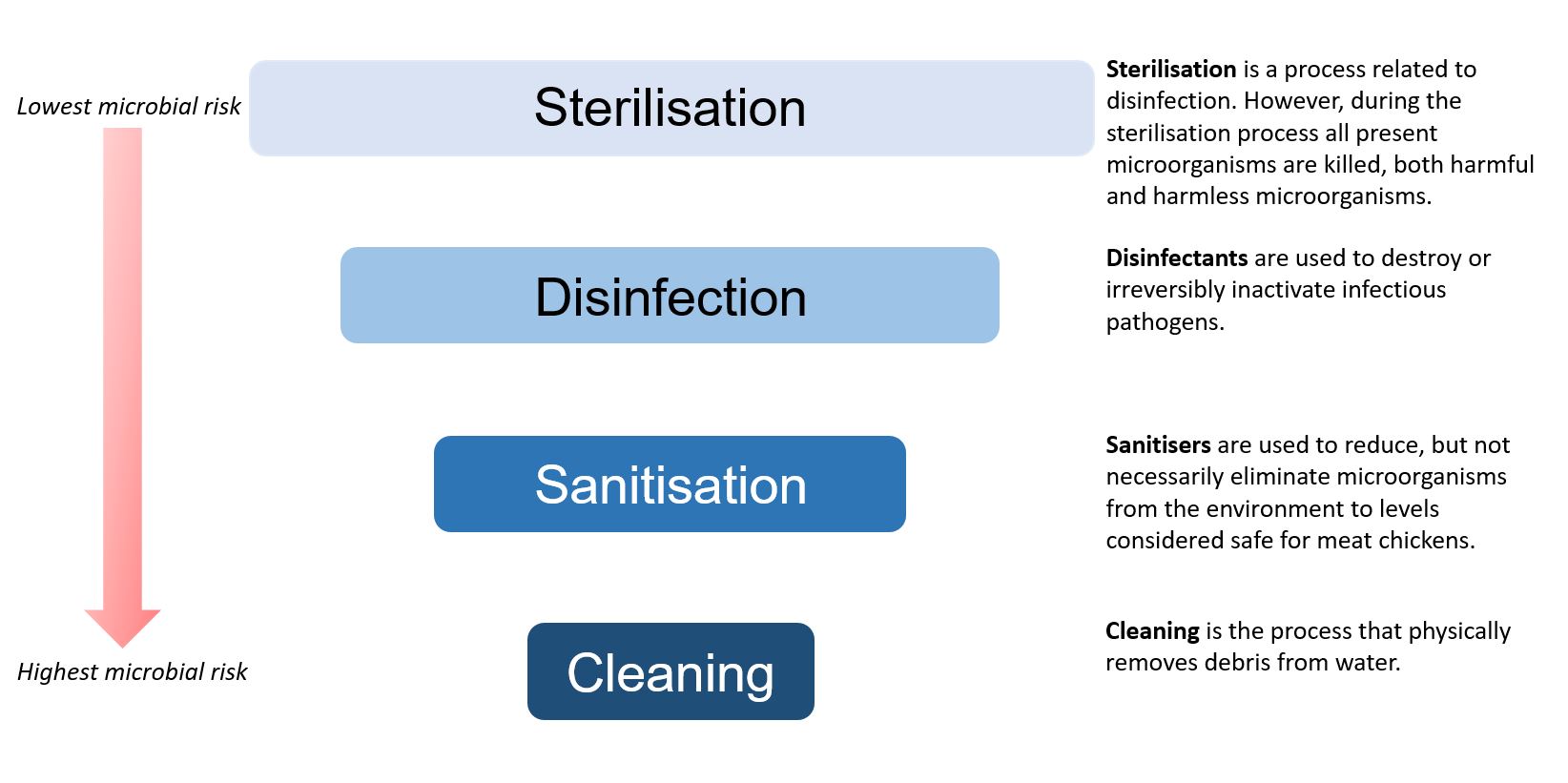The terms disinfection and sanitisation are often used interchangeably; however, they have slightly different meanings. Sanitisation is used to reduce, but not necessarily eliminate, microorganisms to levels considered safe for meat chickens. Disinfection is used to destroy or irreversibly inactivate infectious pathogens. A description of sanitisation and disinfection and how they differ is given in Figure 1.
The same chemicals can be used as either a sanitiser or a disinfectant, the difference being in the dose and contact time. For example, the Cobb (2018a) manual “Level Considered Average” states that a disinfectant residual of >650mV Oxygen Reduction Potential (ORP), and 0 Colony Forming Units (CFU)/ml of bacterial coliforms, indicates water disinfection. The Cobb (2018a) “Maximum Acceptable Level” states that a disinfectant residual of >650mV ORP and 50CFU/ml of bacterial coliforms indicates water sanitisation.


